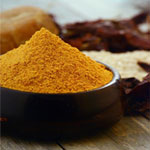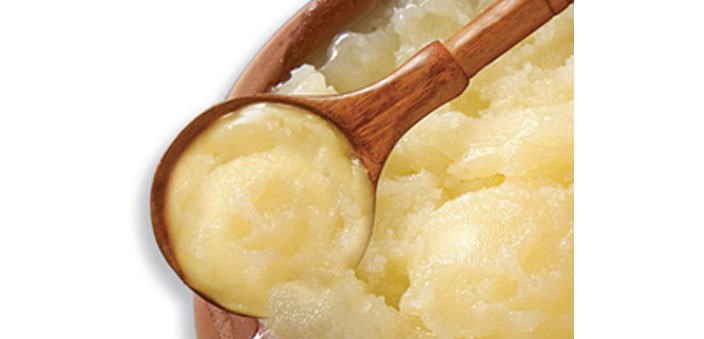Food practices provide a veritable lens into the cultural practices of any community. India is geographically large and culturally varied, as are the food practices followed throughout the nation. While there has been an evocation of Culinary Nationalism by various authors, Arjun Appadurai in his essay on ‘Morality, Nationalism and Food Practices’ highlights that, “India has no historic cuisine, but in religious texts it was ingredients and dishes that were detailed, rather than the process of cooking.”
The evolution of these ingredients used for cooking in India can be seen as a yardstick for studying changes in several socio-economic factors, as evidenced by the ‘social significance of the Indian relationship to food’ mentioned by Appadurai. Food habits and dietary preferences in India are deeply influenced by religious, class and caste considerations. Food brings with it, to a certain extent, a sense of identity and belongingness. We need to examine if the supposed present day commercialisation of food and rise of the middle class has reduced the impact of these considerations. Here, we look at the changing food habits of certain communities in India, in particular at the ingredients used and rituals followed by them for preparing their food.
The commercialisation of food
The art of preparing food is historically a cultural process. There has been a spurt in the commercialisation of ingredients used worldwide and India has been no exception. This commercialisation has eroded away a certain cultural essence to food preparation. Spices, which were once freshly ground and prepared at home, now have packaged counterparts available at every store. Earlier, each Parsi family would have its own unique recipe for Dhansak masala, passed down through generations – this recipe was a matter of pride and was highly guarded by each family. Today, the ‘Mangal Dhansak Masala’ has replaced the popularity of the home made variety. The extensively used molgapudi of South India, which was earlier, prepared at home, is now store brought. An everyday ingredient like ghee, once prepared only at home, is now only store bought in most of urban India. The preparation of these ingredients had several cultural connotations associated with them. It was a rite of passage for the mother to pass down the secret coveted family recipe to her daughter, as it was part of greater religious tradition to use ‘pure’ ghee prepared at home. With women increasingly working outside their homes, and the growth of nuclear families – the cultural aspect of food has reinvented itself in new ways.

Cookbooks that showcase recipes of a certain caste or community are more frequently being published. Diverging from earlier traditions of orally passing down the recipes, these cookbooks help preserve the cultural traditions of a community. But with the writing of these cookbooks being done in English to cater to a wider audience – it opens up the earlier highly secretive barriers regarding food preparation within each community, to the world at large. The popularity of cookbooks like Why Onions Cry: Peek into an Iyengar Kitchen by Nandini Sivakumar and Vijee Krishnan, and The Courtly Cuisine: Kayastha Kitchens Through India by Preeta Mathur tell us that though even today food habits are influenced by the caste one belongs to, it is more of a struggle to maintain these rigid barriers between castes. The caste bias is quite visible though in documentation of food habits, where the leaning is towards that of documenting food habits of the richer upper castes and communities.
Economic shifts and perceptions have also caused a change in how ingredients are prepared and used. While Rajasthan was known for having separate cows that were fed sugarcane and their milk then used to make desserts, especially to make kheer – today milk is produced in the same manner, for all purposes. The consumption of jowar and bajra has reduced among upper classes due to these millets being perceived as food for the poor. Sorpotel, a dish of Portuguese origin, is now limited in consumption to Goa and Mangalore only. It used to have offal boiled in animal blood; most sorpotel now doesn’t contain blood. Offal is lesser consumed in India now, mainly as it has to be used immediately after being removed from the animal – and is used more by poorer sections. Doodh na puff, a popular Parsi sweet that needs to be kept on the terrace through the night to collect dew and be beaten into a creamy air froth and then sold combined with Khariya ni jelly, is no longer made as extensively; the time taken for its preparation no longer makes it feasible (Personally, the time taken is well worth the brilliant taste!).
Globalisation has blurred boundaries of what one would perceive to be ‘Culinary Nationalism’. Corn having been introduced to Indian cuisine only about 200 years ago is now consumed more than barley, which is an indigenous crop. Marathi cuisine traditionally did not use tomato, a foreign crop, as an ingredient. Even today, during rituals, the usage of tomatoes is restricted. But at the same time it has brought different worldwide cuisines to India, which has been adapted within the nation in varied ways. It has brought along with it a culture of fast food and consumerism, especially to urban India and a love for all things from the West, including its food. Though ask any Mumbaikar and they’ll tell you how vada pav beats a burger any day! This dichotomy between the old and the new is what makes food practices in India so intriguing.
Food habits with regard to religious influence are extremely polarised on the main issue of consumption of pork and beef, between Muslims and Hindus.
While the tension seems to have been superficially reduced, it still persists just beneath the surface as seen in recent uprisings against beef consumption. But we do have instances where a professor at Delhi’s St Stephen’s college invited people for a lunch of pork to highlight how food can be seen as the bridge for issues of religious tolerance, though for religious reasons he himself did not consume pork.
One would assume that with the increased commercialisation of food accompanied by the general modernisation of society, the considerations of religion, class and especially that of caste would be reduced. But one cannot say that is truly so. These factors continue to influence what one eats and what one associates culturally with each food item. The divide between castes is in fact exemplified here. Dalit activists like Kancha Ilaiah berate the ‘vegetarian fascism’ of the upper castes, providing the example of the beef festival held at Osmania University, in Hyderabad which was rampant with protests from other castes and communities. Why protests? Because students celebrating the food they eat offended them!
Along with this, ingredients used have changed as a result of changing lifestyles of people. Calorie consciousness has modified traditional ways of cooking. Kashmiri food once laden with rich spices and oils now has its more toned down version available at restaurants. A Parsi dish, eeda pak, once used to contain 50 egg yolks; this has now been reduced due to increasing health concerns. Lack of time in a modern lifestyle has changed how food is prepared, from the utensils used to the time put into each dish. A shift towards a more individualistic society and influence of western cultures has changed food preferences and dietary habits of younger generations. Easily available processed and packaged, ready-to-eat food is the go-to for many young people who live away from home due to the increasing geographical spread of where one works and studies. The fading away and modification of certain ingredients is an evidence to the evolution of the food process in India.
At the same time, one sees an interest in the revival of the traditional food culture of different communities in India. Increase in social media and networking between different communities has led to a wider cultural exchange, including that of food recipes and cultural practices between communities. One can find many blogs, YouTube accounts, Facebook pages etc., that celebrate food across cultures, opening up food practices of varied communities for all. As Chitrita Banerjee writes in her book Eating India: Exploring a Nation’s Cuisine, “Authentic food is adapting, assimilating and regenerating to newer cultural and culinary forms”. Be it through the opening of restaurants and cafes offering truly authentic traditional food or the ingenuity of places like ‘The Bohri Kitchen’ in Mumbai – the rejuvenation of traditional cuisine in India has begun.


 [/column]
[/column]